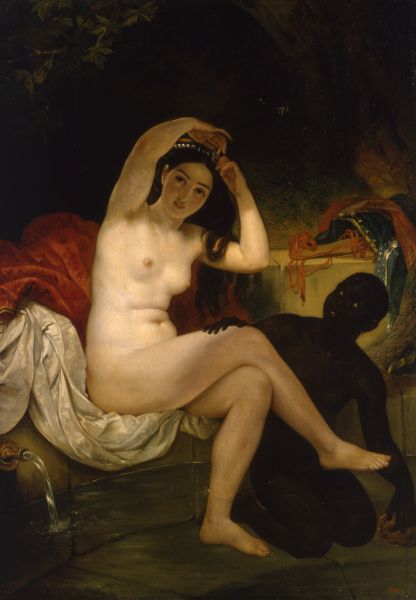|
|
Bathsheba. 1830s (?)

Brullov Karl
Oil on Canvas
87,5 х 61,5
Annotation
According to the Bible, Bathsheba was the wife of King David. Bathsheba is generally depicted in art next to a spring, attended by a maid and a negro boy. This was a subject highly popular in European painting as a specific hymn of praise to female beauty and this is how it was painted by Brullov. The artist, however, also interprets the biblical scene in the spirit of the "Italian genre", which was popular in Russian art in the 1840s. The canvas appears to have been painted in the early 1830s in Italy. A large unfinished picture by Brullov on the same subject hangs in the State Tretyakov Gallery in Moscow.
Author's Biography
Brullov Karl
Brullov (Bruleau), Karl Pavlovich
1799, St Petersburg -1852, Manziana (near Rome)
Painter, watercolourist, draughtsman, history painter, portraitist, genre painter, mural painter. Born into an artistic family. Studied under Anton Ivanov, Alexei Yegorov and Vasily Shebuyev at the Imperial Academy of Arts (1809-22), graduated with a first-class gold medal. Sent to Italy by the Society for the Encouragement of Arts (1822-35). Worked in Milan, Naples and Rome. Won fame in Europe as a portraitist and history painter for such works as The Last Day of Pompeii (1827-33, Russian Museum. St Petersburg)- Returned to Russia and lived in St Petersburg. Honorary freeman (1834), second-degree professor (1835) and first-degree professor (1846) of the Imperial Academy of Arts, where he taught history painting, enjoying the love and respect of his many students. Professor of the Accademia di Belle Arti in Florence. Contributed to exhibitions in Rome, Milan, Paris and St Petersburg. Went abroad on the advice of doctors (1849), settled in Italy (1850).

